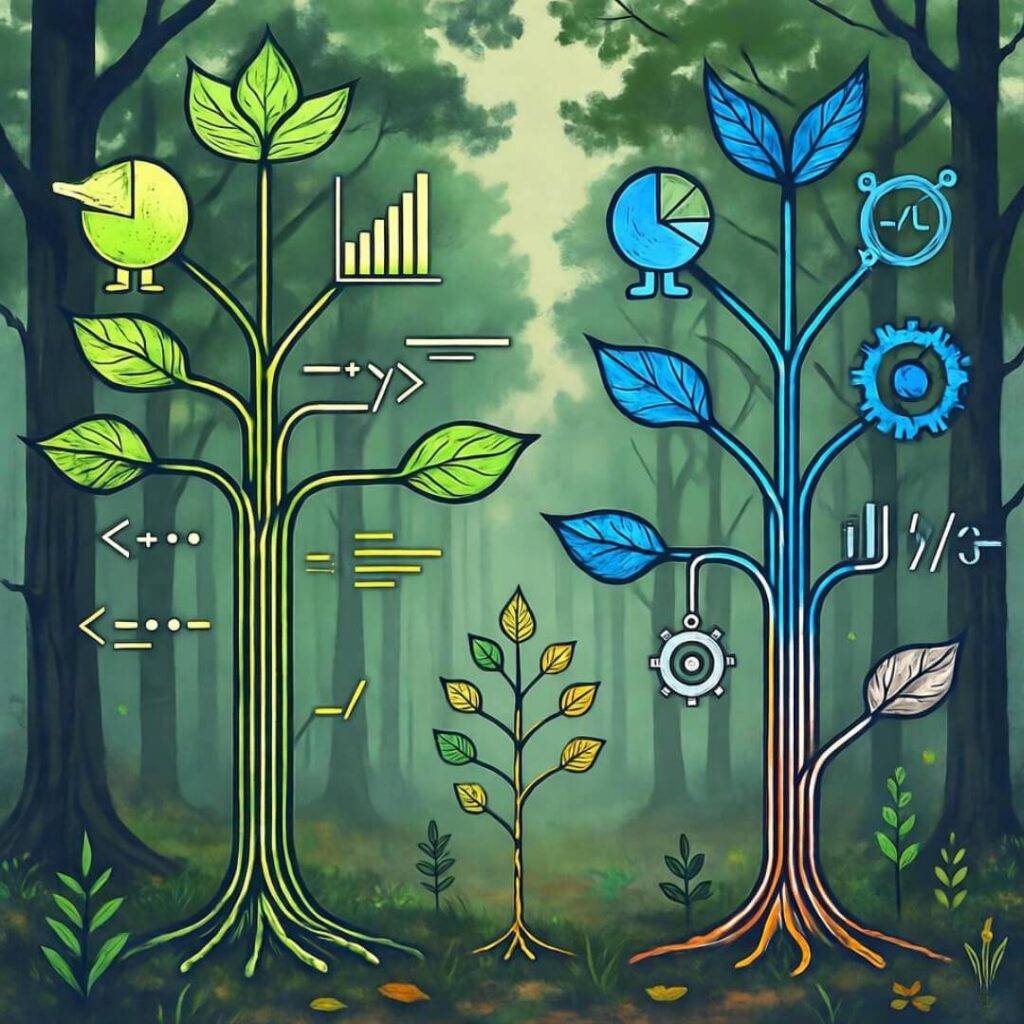So, I’m hunkered down in my cramped Brooklyn apartment right now – yeah, moved from the West Coast recently, and the hum of the subway rattling my windows is kinda distracting, but anyway – trying to get these ML algorithms explained in plain English because, seriously, when I first dove into this stuff during my bootcamp phase, it felt like deciphering alien hieroglyphs while nursing a hangover from too much cheap coffee. Like, I remember spilling my latte all over my keyboard one rainy afternoon in Seattle, cursing at why linear regression wouldn’t just click, and thinking, “Why can’t someone just break down these ML algorithms explained without all the math mumbo-jumbo?” It’s embarrassing, but I legit talked to my houseplant about it, hoping for some epiphany. Now, as an American who’s bounced around startups and seen the hype firsthand, I gotta say, ML isn’t some flawless magic – it’s got its warts, like overfitting that bites you in the ass when you least expect. But hey, let’s ramble through 10 of ’em, with my messy takes thrown in.
Linear Regression: The Starter ML Algorithm Explained
Okay, linear regression is basically like drawing a straight line through a bunch of dots on a graph to predict stuff – think guessing how much your rent might hike based on the neighborhood’s trend, super simple. I tried using it for predicting my grocery bills last month, inputting data from my crumpled receipts smelling like old bananas, and it worked okay until I realized I forgot to account for my impulse buys, like those late-night chips runs. It’s great for continuous stuff, but man, if your data’s all curvy, it flops hard – I learned that the embarrassing way when my model predicted I’d save money but I ended up broke. Anyway, it’s the gateway drug to more complex ML algorithms explained later. Check out this solid breakdown on Wikipedia for the nitty-gritty: Linear Regression.

In practice, from my flawed view, start with clean data – I once ignored outliers from a wild weekend spend, and boom, predictions went haywire. It’s honest, though; no pretending it’s perfect.
Logistic Regression: ML Algorithms Explained for Yes/No Vibes
Shifting gears, logistic regression is linear’s cousin but for binary outcomes, like “Will this email be spam or not?” – it squishes probabilities between 0 and 1 using this S-shaped curve. I used it to classify my junk mail during a boring quarantine in 2020, sitting in my stuffy room with the AC blasting, and it nailed about 80% but hilariously flagged my mom’s recipes as threats. Kinda contradictory, right? I love how it’s interpretable, but hate when multicollinearity sneaks in and messes things up – happened to me on a freelance gig, and I had to confess to the client I screwed up the features. For more deets, peep this from Scikit-learn docs: Logistic Regression. It’s a staple in ML algorithms explained for classification.
Decision Trees: Branching Out in ML Algorithms Explained
Decision trees are like those choose-your-own-adventure books, splitting data based on questions to make decisions – super intuitive for stuff like “Should I buy this stock?” I built one to decide weekend plans based on weather apps, factoring in my hatred for humidity here in the East Coast summers, and it was spot-on until a surprise storm ruined my BBQ, leaving me with soggy burgers and a lesson in entropy. They’re prone to overfitting, though, which bit me when I overcomplicated a tree for a side project and it generalized like crap. Embarrassing, but real. Dive deeper here: Decision Trees on Towards Data Science.

Honestly, prune ’em hard – my tip from trial and error.
Random Forest: Ensemble Power in ML Algorithms Explained
Random forest is basically a bunch of decision trees voting together, reducing errors like a democracy for predictions. I threw it at a dataset from my fantasy football league last season, crunching stats while munching on leftover pizza that smelled suspiciously old, and it predicted winners better than my gut, but overkill for small data – I wasted hours tuning hyperparameters only to realize simpler was better. Contradiction? Yeah, I hype ensembles but admit they’re resource hogs. Great for robustness in ML algorithms explained. Reference: Random Forest on Machine Learning Mastery.
Support Vector Machines: The Boundary Boss ML Algorithm Explained
SVMs draw lines (or hyperplanes) to separate classes with max margin – think fencing off cats from dogs in a yard. I experimented with it for image classification on my phone pics, during a road trip through the Midwest where the flat lands inspired straight boundaries, but kernel tricks confused me so bad I rage-quit twice. It’s powerful but slow on big data, and I regret not scaling features first – total noob move. For ML algorithms explained with math-lite, check: SVM Tutorial.
K-Nearest Neighbors: Neighborhood Watch in ML Algorithms Explained
KNN classifies based on closest data points – lazy learner, no real training. I used it to recommend movies from my watchlist, curled up on my lumpy couch with popcorn kernels everywhere, and it suggested gems but bombed on sparse data, like when my tastes shifted post-breakup. Scalability sucks, but it’s simple – my go-to for quick prototypes despite the distance metric headaches. Link: KNN Explained.
K-Means Clustering: Grouping Gangs ML Algorithms Explained
K-means groups data into clusters by averaging centroids – unsupervised fun for segmenting customers. I clustered my Spotify playlists during a insomniac night, the city lights flickering outside, and discovered my “chill” vibe was actually chaotic rock – surprising self-discovery. Sensitive to initials, though; reran it multiple times and got wonky results. Tip: Elbow method saved me. Resource: K-Means on Real Python.
Naive Bayes: Probability Play in ML Algorithms Explained
Naive Bayes assumes independence for fast classifications, like spam filters. I applied it to Twitter sentiments (or X, whatever), sipping lukewarm tea in my kitchen, and it was speedy but naive indeed – ignored correlations and misclassified sarcasm, which I do a lot. Still, for text, it’s my underrated fave in ML algorithms explained. See: Naive Bayes Guide.

Neural Networks: The Brainy ML Algorithm Explained
Neural nets mimic brains with layers of nodes – deep learning base. I tinkered with one for handwriting recognition, fingers greasy from takeout, and it amazed me but training took forever, leading to all-nighters I regret. Overhyped sometimes, but transformative – my views flip-flop. Reference: Neural Nets Intro.
Gradient Boosting: Boosting Wins in ML Algorithms Explained
Gradient boosting builds trees sequentially to fix errors – XGBoost king. I used it for a Kaggle comp, sweating in my hot apartment, and it won me a spot but tuning was a nightmare, contradicting my “keep it simple” mantra. Powerful for comps. Link: Gradient Boosting Explained.
Whew, that was a ramble – these ML algorithms explained have shaped my messy career, from epic fails to small wins. If you’re starting out, play around, make mistakes like I did. Hit me up in comments: What’s your fave ML algorithm explained? Or try one out yourself!


